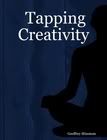
If you have had the opportunity James Joyce's Ulysses, or any of Joyce's works for that matter, one thing that comes to the surface is that the city of Dublin takes on its own character persona. Because all stories need an environment in which to take place, the ability create an environment that is as identifiable as any other character in a story is valuable skill indeed.
It's one thing to say this, however, and something all together different to execute. For one, we are trained, as writers, to always be moving the story forward. With characters as a main focus, we learn to make their stories move. The right environment, though, can make that story even better.
One hurdle that young writers face is in thinking that, because they come from a small town, there is nothing exciting to take from that experience. They try to set stories in big cities like New York or Chicago. The reality of this situation is that small towns are teeming with unique characters, dirty laundry, and oddball traditions. Big cities, however, harbor their own sense of anonymity fostered by the impersonal nature that comes with large populations.
To start figuring out how to create an environment that has character depth, start making notes about what makes your town so unique. If you live in a big city, focus on what makes your neighborhood so unique.
Where I'm from:
- Strangers wave hello as they drive by. The motive is two-fold. Of course, it's just good manners. It also lets you know they are taking notice of who is around.
- It's okay to close the bar as long as you don't miss the VFW pancake breakfast the next morning. You can bring your hangover; you won't be the only one.
- You ALWAYS tip the girl scooping your ice cream, because she is 16, her wrist hurts from scooping for the last 7 hours, and she's working hard instead of sitting at home on facebook... and that still matters.
- The land is so flat that the sunset takes an hour. And for that hour, the sky is painted the most beautiful shades of blue, orange, and pink you have ever seen. In fact, it's so beautiful that sometimes, you watch the sunset for the whole hour.
So go ahead. Start making your list. What's it like where you're from?



